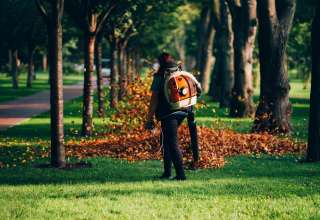Water is a basic human necessity to live. Without it, a person can only survive up to 3 days. Water serves as a drink, an ingredient to cooking, and an aid to cleaning objects or your body. Water is essential to everyday life in the home, both for drinking and daily chores.
To ensure that you have a continuous water supply, even if there’s water pipe interference happening in your area, you should store enough emergency water to use for drinking and other things. Listed below are some tips on how you can keep enough water in your household:
Use Water Tanks
A water tank’s purpose is to store water for your home. To ensure that you’re storing enough for everyone, purchase a water tank that has the capacity for every member of your household for at least a week of use.
Using a water tank to store water has been the most effective and commonly used method in every household, as you don’t have to do anything to keep it. You just let it be, and it’ll refill for you.
If you’re having trouble going outside to purchase a water tank, the Water Tank Factory can deliver to many areas, which allows you to have a water tank delivered straight to your home conveniently.
Use Safe Water Containers
Aside from using water tanks, if you’d like to increase your water supply at home in case of an emergency, you should invest in bottled waters.
You can use commercial water containers, or you can choose to store them on your own. Just make sure that you’re using well-sanitized containers, and that they’re in good repair. Avoid containers with harmful plastics or anything that’s been used to hold chemicals.
Ideally, you should avoid containers marked with “3”, “6”, and “7”, as they all contain hazardous material that could compromise your health.
Sanitize Your Containers Thoroughly
Before you add water to your containers, you must sanitize them entirely so that there’ll be no bacteria or residue inside. You can wash them using soap and water, and rinsing thoroughly; just make sure that they’re absolutely clean.
If the container you’re using has held food or drinks before, you should disinfect it first by filling it with water and adding 5 mL (1 tsp.) of household bleach per 1 liter of water. Then seal it tight, swish the bottle to allow the mixture to touch every surface, and rinse very well.
Disinfect Your Water
Before you use the water you have at home, you must disinfect it to remove any microorganisms, especially if your tap water isn’t safe or you obtain your water from a well.
Begin disinfecting your water by bringing it to a rolling boil for one to three minutes. If you cannot boil your water or don’t want to lose any through evaporation, adding bleach is your next best option.
Municipalities have been using bleach to deliver clean water to your home through your water pipes for a long time. As long as you consume very little of it, it shouldn’t hurt; it might even help to improve your digestive system.
You can use bleach by adding 2.5 ml (½ tsp.) of unscented and additive-free bleach for every 5 gallons of water. After adding the bleach, let the mixture sit for 30 minutes before you can store it properly.
Use A Water Filter
While boiling and adding bleach to the water helps to disinfect it, it doesn’t help remove heavy metals and lead that are harmful to your health. If you’ve acquired your water through mines, farms, or factories, the best option for you is to run your water through a water filter.
You should be using an activated carbon filter and reverse osmosis to guarantee the cleanliness of your water. You may choose to have it run through the filters up to three times until you’re satisfied that it’s thoroughly clean.
Seal Your Container Air Tight
Before you seal your container, you shouldn’t allow any air to stay in the water, as this will harm the quality. Ideally, you would fill the water container to the top as much as possible and leave no space for air behind.
After you’ve filled your water containers, close them with an airtight cover to prevent air from entering your container. Ensure that you don’t touch the inside of your water container’s cap, as this can lead to contamination that could harm your water.
Label Your Containers
After sealing your containers, you should add a label to each indicating its purpose, time, and the date you’ve stored it. You may want to replace your water storage every six months, as the longer it sits on the container, the higher the chance that microorganisms will form.
Store in A Cool and Dark Place
If you want your water to be completely safe while you store it, you should place it in a cool and dark place, as light and heat can damage the containers, affecting the water quality inside of them.
Sunlight can cause algae and form molds in your containers, even if you’ve sealed it airtight or used store-bought bottles.
Additionally, you shouldn’t store your plastic containers near chemical products such as kerosene, gasoline, or pesticides as their vapor can pass through the plastic and affect your water, even if it’s airtight.
Conclusion
In case of emergencies, it’s always a smart move to store water efficiently so that you have something to drink when you really need it. You can also add dehydrated foods, and have the complete package right in your basement.
Furthermore, you should make sure that you’re storing sanitized and disinfected water inside a clean container, to maximize cleanliness and avoid any possibility of catching an illness due to the water. Always remember to change your water every six months to prevent any contamination; you can keep track of these changes via a notebook left where you keep the water, or something similar.











